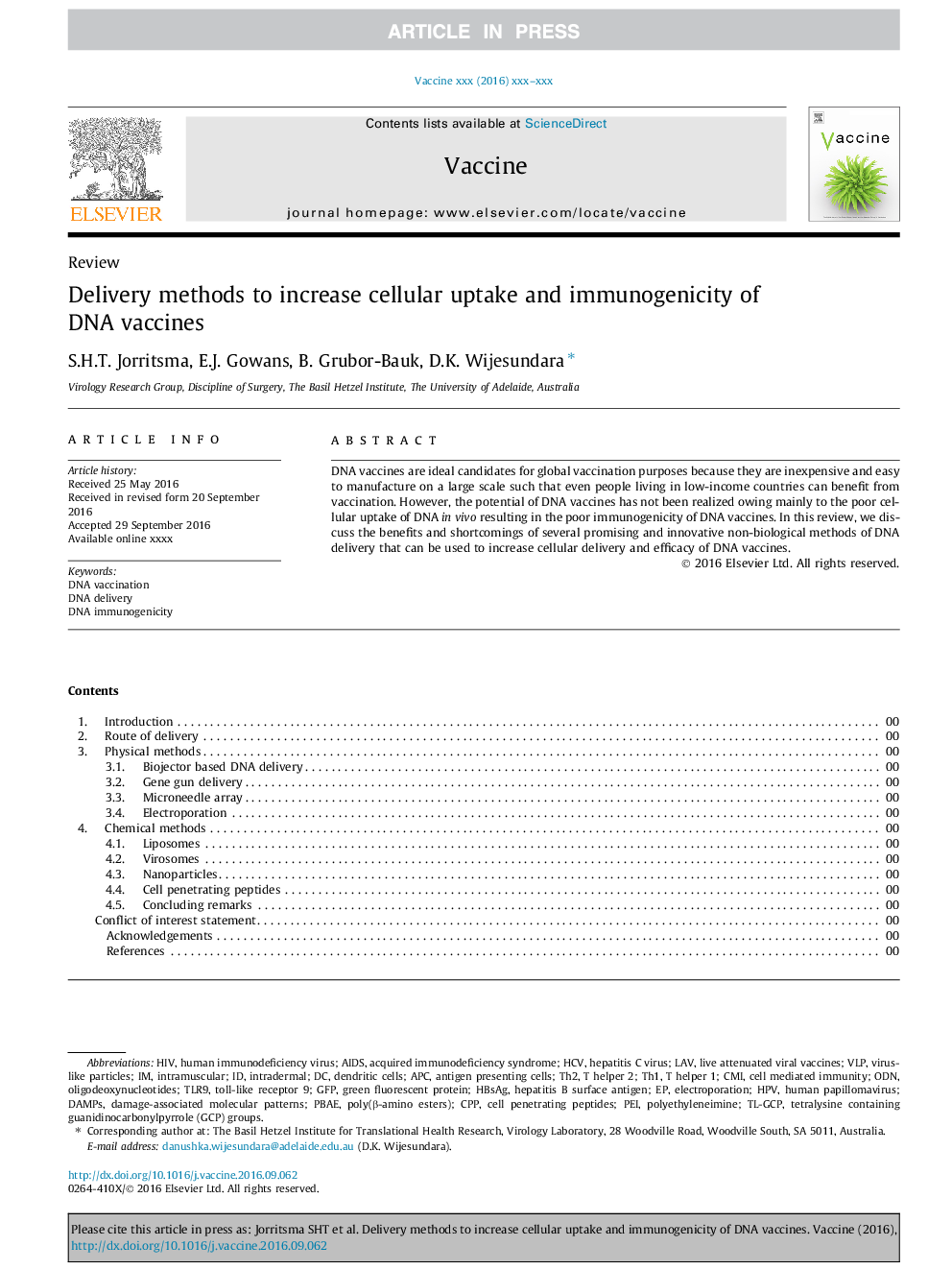| Article ID | Journal | Published Year | Pages | File Type |
|---|---|---|---|---|
| 5537416 | Vaccine | 2016 | 7 Pages |
Abstract
DNA vaccines are ideal candidates for global vaccination purposes because they are inexpensive and easy to manufacture on a large scale such that even people living in low-income countries can benefit from vaccination. However, the potential of DNA vaccines has not been realized owing mainly to the poor cellular uptake of DNA in vivo resulting in the poor immunogenicity of DNA vaccines. In this review, we discuss the benefits and shortcomings of several promising and innovative non-biological methods of DNA delivery that can be used to increase cellular delivery and efficacy of DNA vaccines.
Keywords
ODNOligodeoxynucleotidesPBAET helper 2T helper 1Th2Th1VLPHBsAgCMITLR9PEIintradermalAPCDAMPsGFPCPPHepatitis B surface antigenAntigen presenting cellsElectroporationdamage-associated molecular patternsAIDSDNA deliveryVLPs, Virus-like particlesCell mediated immunityDendritic cellsacquired immunodeficiency syndromeIntramuscularHCVHepatitis C virusDNA vaccinationhuman immunodeficiency virusHIVHuman papillomavirusHPVgreen fluorescent proteinpolyethyleneimineCell penetrating peptidesLAVToll-like receptor 9
Related Topics
Life Sciences
Immunology and Microbiology
Immunology
Authors
S.H.T. Jorritsma, E.J. Gowans, B. Grubor-Bauk, D.K. Wijesundara,
